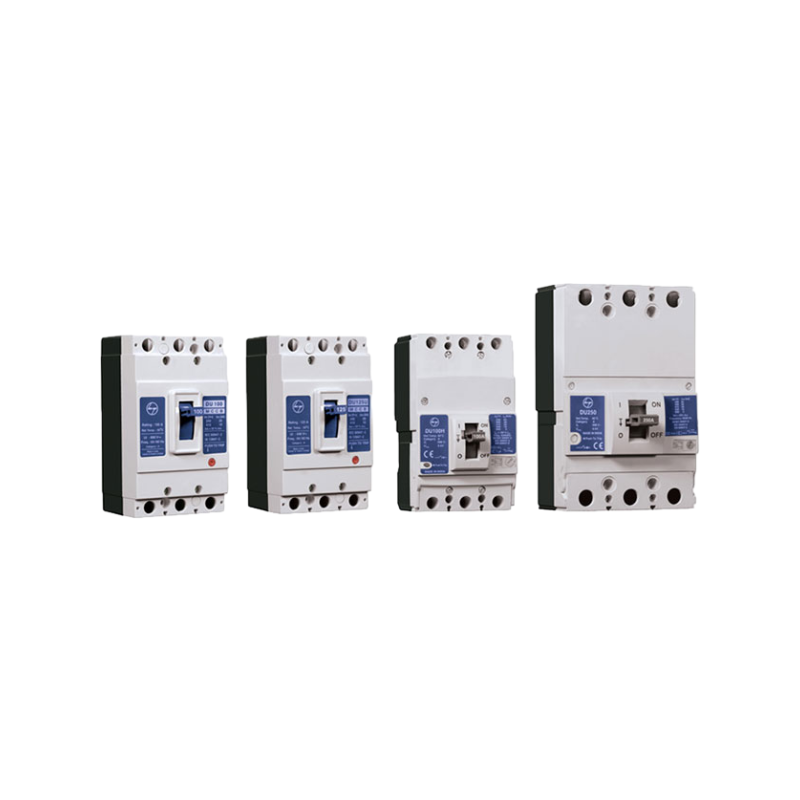Do you know how to select MCCB? The MCCB selection is crucial for the safety and performance of an electrical system. An MCCB is a device used to protect circuits from electrical faults such as overcurrent and short circuits. This article explores how to select MCCB that suits a specific application, including key factors and steps.

1. Determine the Rated Current
The first and foremost factor is to determine the rated current of the circuit. The rated current of the circuit breaker should be greater than or equal to the maximum load current of the circuit to ensure it can reliably trip without being triggered by overcurrent.
2. Consider Environmental Conditions
Considering the environmental conditions in which the MCCB will be installed is also crucial. For instance, high temperatures, high humidity, or corrosive environments may require specially designed MCCBs. Ensure that the selected MCCB’s environmental characteristics meet the requirements of the actual installation environment.
3. Determine the Interrupting Capacity
The interrupting capacity is the maximum current that an MCCB can safely interrupt. It should be determined based on the short-circuit current of the circuit. When selecting an MCCB, it is essential to ensure that the interrupting capacity is high enough to prevent equipment damage or the risk of a fire.
Rated ultimate short-circuit breaking capacity refers to the breaking capacity under specified conditions. After operating according to the prescribed test procedures, the circuit breaker continues to carry its rated current regardless of the condition.
Rated operating short-circuit breaking capacity refers to the breaking capacity under specified conditions. After following the specified test procedure, it must be considered that the circuit breaker continues to carry its rated current.
In order to meet the needs of different users, many domestic circuit breaker manufacturers now divide the short-circuit breaking capacity of the same frame level rated current into different levels. When users choose, they must meet the ultimate short-circuit breaking capacity of the circuit breaker. The expected short-circuit current of the line can meet the requirements. There is no need to artificially add an insurance factor to avoid waste.
The value of the rated operating short-circuit breaking capacity can be 25%, 50%, 75%, or 100% of the rated limit short-circuit breaking capacity. Most circuit breakers are 50% to 75%, and a few have 100% (Ics=Icu).
4. Consider the Rated Voltage
In addition to current, the rated voltage is another key factor when choosing an MCCB. Ensure that the selected MCCB’s rated voltage matches the circuit’s rated voltage. An overly high or low rated voltage could result in abnormal MCCB operation.
The rated insulation voltage is the voltage value for which the circuit breaker is designed. The electrical clearance and creepage distance should be determined with reference to this value. Some circuit breakers do not clearly specify the rated insulation voltage. The maximum value of the rated working voltage should be regarded as the rated insulation voltage. In any case, the maximum rated working voltage does not exceed the rated insulation voltage.
The rated working voltage refers to the voltage value related to the breaking capacity and the use category. The rated working voltage of the molded case circuit breaker is mostly 50Hz, 380V, but there are also 50Hz, 600V, and the rated working voltage 380V, 50Hz molded case circuit breaker, absolutely not Allows use of 660V or 1140V power supply voltage.
The rated control power supply voltage is the voltage when the molded case circuit breaker is equipped with a shunt release and electric mechanism accessories. There are two voltages: AC and DC. Be sure to indicate AC or DC when selecting.
5. Consider the Rated Frequency
The circuit’s rated frequency should also be taken into account. Typically, industrial circuits have frequencies of 50Hz or 60Hz, but some special applications may require different frequencies. When choosing an MCCB, ensure that it complies with the required frequency.
6. Determine the Number of Poles
The number of poles in an MCCB refers to how the circuit breaker is connected in the circuit. Typically, MCCBs can be configured as single-pole, double-pole, three-pole, or four-pole. The choice of the right number of poles depends on the nature of the circuit and connection requirements.
7. Consider Additional Features & Attachment function
Some MCCBs come with additional features such as overload protection, short-circuit protection, ground-fault protection, and more. Depending on the specific application’s needs, selecting an MCCB with the appropriate additional features can enhance circuit safety and performance.
As a derivation and supplement of the function of the circuit breaker, accessories add control means and expand protection functions to the circuit breaker. They are an integral and important part of the circuit breaker. They mainly include auxiliary contacts, alarm contacts, shunt releases, and undervoltage. Releases, electric operating mechanisms, external rotating operating handles and other accessories.
1) The auxiliary contact is mainly used to display the opening and closing status of the circuit breaker but cannot display whether it has tripped due to fault. It is connected to the control circuit of the circuit breaker. The rated current of the molded case circuit breaker frame is 100, which is a single-break point transfer contact. 225 and above are bridge contact structures, with an agreed heating current of 3A; frames with a rated current of 400 and above can be equipped with two normally open and two normally closed contacts, with an agreed heating current of 6A.
2) The alarm contact is mainly used to trip freely when the load of the circuit breaker encounters overload, short circuit or under-voltage faults. The working current of the alarm contact is: AC380V, 0.3A, DC220V, 0.15A, which generally does not exceed 1A, while the heating current can range from 1 to 2.5A.
3) The shunt release is an accessory for remote control of opening. Its voltage can be independent of the main circuit voltage. The shunt release is a short-time working system. The coil energization time generally cannot exceed 1s, otherwise the coil will burn. In order to prevent the coil from burning out, a microswitch is connected in series with the coil of the shunt release of the molded case circuit breaker. When the shunt release is energized and the armature is closed, the microswitch changes from the normally closed state to the normally open state. Due to the shunt tripping The control circuit of the machine power supply is cut off, and even if the button is pressed artificially, the shunt coil will no longer be energized. This avoids coil burnout and the micro switch returns to the normally closed position when the circuit breaker is closed again. The shunt tripper has a variety of control voltages and different power frequencies, which can be used in different occasions and different power supplies.
4) The undervoltage release is used for long-term voltage protection of lines and power supply equipment. When in use, the undervoltage release coil is connected to the power side of the circuit breaker. The circuit breaker cannot be closed until the undervoltage release is energized, otherwise the circuit breaker cannot be closed. Go to the gate. The user should confirm whether the working voltage of the line and the undervoltage release are consistent. The working range of undervoltage is (70%~35%)Un. Undervoltage releases also have a variety of rated operating voltages and different power frequencies, which can be selected for different occasions and different power supplies.
5) The electric operating mechanism is used for automatic control of circuit breakers and remote closing and opening. There are two types of electric operating mechanisms and electromagnetic operating mechanisms: the electric operating mechanism is driven by an electric motor and is generally suitable for circuit breakers with a frame rating of 400A and above. The electromagnet operating mechanism is suitable for circuit breakers with a frame rating of 225A and below.
8. Adhere to Standards and Regulations
Lastly, ensure that the selected MCCB complies with international and local electrical standards and regulations. This helps ensure the compliance of the installation and use of the MCCB while providing added safety.
In conclusion, MCCB selection requires careful consideration of the circuit’s requirements, environmental conditions, and additional features. Making the correct choice will help improve the reliability and safety of the electrical system, ensuring it can effectively address electrical faults and overcurrent issues. Therefore, when purchasing an MCCB, do not overlook the key factors and steps mentioned above.






